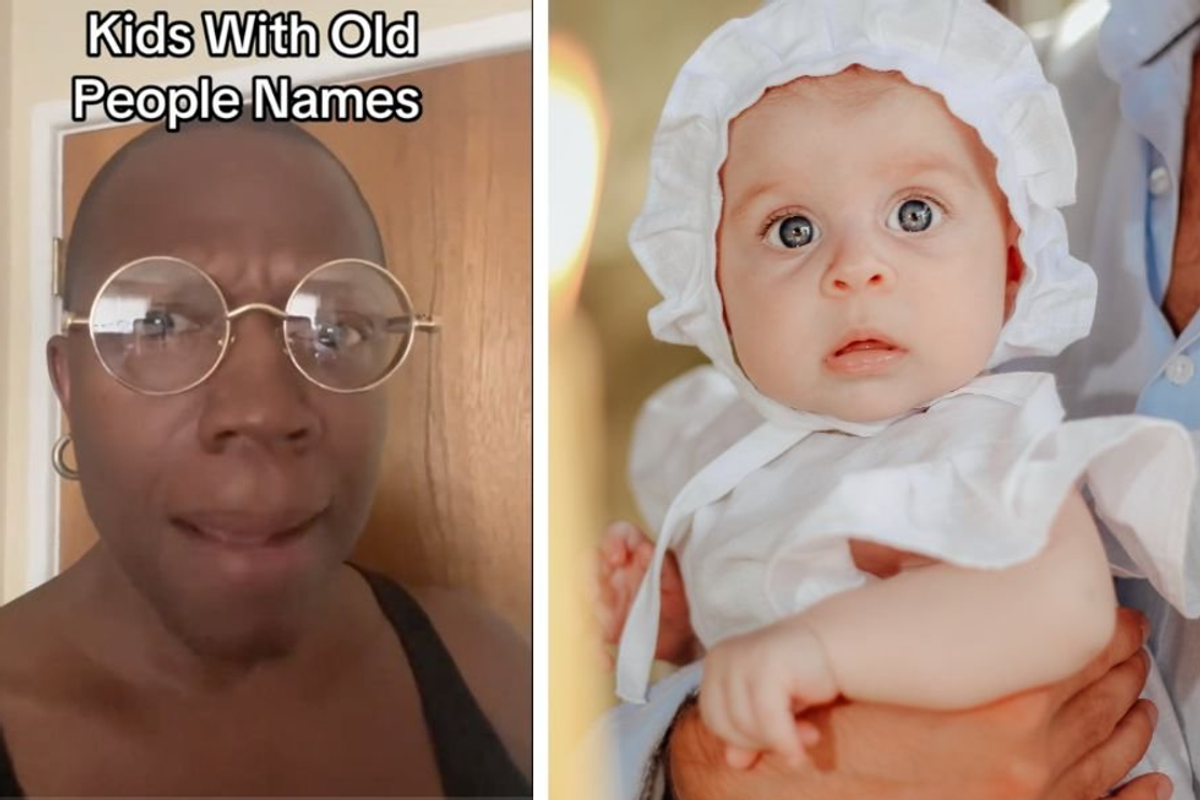People share helpful tips for keeping kids safe after U.K. abduction attempt caught on tape

Most of us like to pretend we live in a world where kidnappings only happen in the movies, but a video of an attempted abduction and alleged sexual assault of a school girl in the U.K. reminds us that it can and does happen in real life. The woman who thwarted the attempt has been praised for noticing something amiss and having the courage to confront the would-be kidnapper. Though abductions by strangers is rare, attacks and assaults do happen, and it's important that people know some ways to keep ourselves and our loved ones safe.
A Reddit thread discussing the U.K. incident contains helpful tips for doing just that. There are some standard self-defense preparations, such as carrying pepper spray or taking self-defense classes. But there are other less obvious things you can do to lessen the chances of abduction or attack.
One tip is to have a password for anyone who is sent to pick up your kids. Kids should know never to go with a stranger, but if there were ever a situation where someone they don't know or don't know well told them they needed to go with them because there was an emergency, kids need to be prepared for how to handle it.
"Create a password with your kids. Tell them that if someone comes to pick them up or tries to make them accompany them, this person must know the 'password.' If they don't, don't go with them. Change the password every time one has been used.
Example: growing up, we had a password: 'Pinocchio.' My siblings and I always got home from school about 40 minutes earlier than my parents did from work and so, we were home alone for this amount of time.
It was almost summer so for the 40 minutes, we played in the backyard of our house. Our neighbour, an elderly man who was always so nice to us and we had known for him years now, told my younger sister that my mom had called and asked if he could 'feed us a snack' as she was running late. He was trying to get her to come inside and help him grab some sandwiches. She asked him the password and he was confused. She kept persisting and he eventually said something along the lines of, 'oh yeah, your mom told me it but I can't remember. I'm so old!' But my sister still refused.
Eventually he gave up and my mom came home on time. We told her what had happened and she marched over there basically asking him 'wtf.' He said my sister got mixed up, he was simply asking us if we wanted a snack—never admitting to saying she had apparently called him and leaving out the fact that he was trying no to get her inside.
About 6 months later, he was arrested for possession of child pornography, including old photos of his own kids when they were young and some shots of other neighbourhood kids that appeared to have been taken from a window.
We truly think this password system saved my sister from being another victim of his."
It's important to trust our intuition and teach our children to do the same. If something doesn't feel right, there's a chance something isn't right, and we should honor that gut feeling. Teach kids to talk to a trusted adult if something feels off, and to leave situations in which they feel uncomfortable.
Along similar lines, having a code phrase for kids to use when they call or text you from a friend's or relative's house can help them get out of uncomfortable situations where they might not have the power to just leave. Another Reddit user shared a helpful tip for sleepovers:
"When your child is at a sleepover, give them a special phrase. One that they can say over the phone or through text that will alert you to come pick them up immediately, no questions asked. Ours is something silly like 'How's grandma's dog?' I'll reply something along the lines of 'not good. I'm on my way.' Then I call the parent hosting the sleepover, let him/her know that there's a situation with my family and I need my daughter to gather her things so I can pick her up. I usually wait to make the call until about ten minutes before I get there to avoid her awkwardly sitting around having to be grilled by the parents. My daughter has proof on her phone that she didn't call to go home (even though she did) and she avoids having to explain she wants to leave. And she isn't required to tell me why she wanted to come home. I will definitely ask her and offer comfort, but I don't force her to talk about it until she is ready."
Another parent said they did something similar.
"We used the password situation the other way too—it was a way for my daughter to call us from say a party, date or whatever that she wanted to leave but couldn't say out loud. This has gotten easier with texting but there are still times it helps.
Our code word was muffin bc it was a word that could be easily used either way. She called us from a sleep over that she didn't want to be at anymore and said she'd like muffins for breakfast. I immediately called the mom of the girl hosting and said we had a family emergency so I needed to pick her up. Worked like a charm. Turns out the girls 16 year old brother was being skeevy and offering the girls booze and weed, and asking "how far they had gone" ... the girls were 11 and 12."
One Reddit user shared a story of what a young relative did when she suspected a car was following her:
"My aunt's daughter was just in her car driving to her mom's house... a few days ago. She was getting off main roads and into developments and felt like this car was following her. She called her mom, who told her to start making weird turns and not come home. She did... the guy followed. Her mom called the cops and they were all there waiting when she pulled up. They couldn't arrest the man, he claimed he was looking at the leaves changing.
He was just arrested for attempting to abduct another woman at knifepoint. Two good samaritans saved her and held him down.
Trust your gut."
A couple of people added tips for physically fending off an attacker, even if you don't have specific self-defense training:
"Another good tip is to have them actually physically practice what to do if someone snatches them...dead weight, back on the ground, kick like hell, scream stranger! Dr. Phil had a guy on who described the technique as chiwawa [sic] crazy—flip out and cause a scene. And actually physically practice to help them not freeze in the moment," wrote one user.
"Also this!" added another. "My dad, now an ex-cop, made us practice about once a month. It's seems a bit much but honestly, I became pretty confident in my skills and was even able to remember one of those moves years later when I was 23 and someone tried to snatch my purse in a mall parking lot!"
KidsHealth.org offers other child-specific tips for keeping your kids safe in public, and Brown University offers a helpful list of ways for anyone to protect themselves from potential danger.
Though we all hope we'll never been faced with a situation like the one we saw in the U.K., it's good to be prepared for anything and always better to be safe than sorry.
- Child sex trafficking organizations set the record straight on QAnon ... ›
- When 270 schoolgirls are abducted by terrorists and it doesn't make ... ›
- Live video shows a woman bravely saving a young girl from being ... ›
- 11-yr-old wiped blue slime on her attempted kidnapper's arm, helping police identify him - Upworthy ›
- Video of Bruce Lee explaining why kung fu is like water - Upworthy ›
- OR nurse shares child safety tips - Upworthy ›



 Worried mother and children during the Great Depression era. Photo by Dorthea Lange via Library of Congress
Worried mother and children during the Great Depression era. Photo by Dorthea Lange via Library of Congress  A mother reflects with her children during the Great Depression. Photo by Dorthea Lange via Library of Congress
A mother reflects with her children during the Great Depression. Photo by Dorthea Lange via Library of Congress  Families on the move suffered enormous hardships during The Great Depression.Photo by Dorthea Lange via Library of Congress
Families on the move suffered enormous hardships during The Great Depression.Photo by Dorthea Lange via Library of Congress

 Millennial mom struggles to organize her son's room.Image via Canva/fotostorm
Millennial mom struggles to organize her son's room.Image via Canva/fotostorm Boomer grandparents have a video call with grandkids.Image via Canva/Tima Miroshnichenko
Boomer grandparents have a video call with grandkids.Image via Canva/Tima Miroshnichenko
 Classic Film GIF
Classic Film GIF  Oh nothing, just Edyth, Arthur, and Iris hanging out at the park.
Oh nothing, just Edyth, Arthur, and Iris hanging out at the park.
 It helps that Golden Retrievers are notoriously friendly. Photo by
It helps that Golden Retrievers are notoriously friendly. Photo by